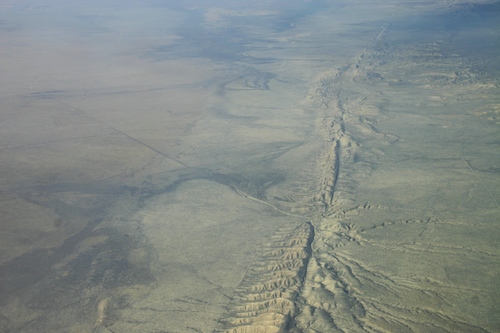Chapter 15
Tectonics and
Landforms

San Andreas Fault in the Carrizo Plain, aerial view from an altitude of 8500 feet.
Courtesy Wikimedia Commons
In this chapter you'll travel back to a distant time when the geography of the
Earth's
crust was much different than it is today. The search for answers to
Earth's dynamic nature will set the context for explaining modern day tectonic activity. Tectonics is study of the processes that control the structure and properties of Earth's lithosphere. Plate tectonics is the process of plate formation, movement, and destruction. It explains the evolution of Earth’s surface through time, the building of mountains, formation of deep valleys, and the movements of lithospheric plates that have impacted climate, human evolution and the distribution of plant and animal species.
By the conclusion of the chapter you should be able to explain how plate
movement has created many of the surface
features of our present day Earth.
Learning Outcomes
By the end of this chapter you should be able to:
- Describe the theory of plate tectonics and the evidence used to support it.
- Compare and contrast the environmental setting of the four types of plate boundaries.
- Explain the relationship between earthquakes, volcanoes, and plate boundaries.
- Draw simple diagrams showing the effect of stress on rock materials.
- Describe the movement associated with faulting.
- Describe landform features resulting from folding.
You may view a list of chapter topics by clicking the "Topic Outline" link or go directly to the first topic by clicking "Continue".
Previous | Topic Outline | Continue